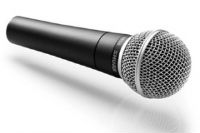Vocal Range and Voice Types
The major defining characteristics for classifying singing voices into groups known as voice types.
Singing and the definition of vocal range
 While its broadest definition is simply “the span from the lowest to the highest note a particular voice can produce,” this
While its broadest definition is simply “the span from the lowest to the highest note a particular voice can produce,” this
broad definition is often not what is meant when “vocal range” is discussed in the context of singing. Vocal pedagogists tend to define
it as the total span of “musically useful” pitches that a singer can produce. This is because some of the notes a voice can
produce may not be considered usable by the singer within performance for various reasons. For example, within opera all singers must
project over an orchestra without the aid of a microphone. An opera singer would therefore only be able to include the notes that they are
able to adequately project over an orchestra within his or her vocal range. In contrast, a pop artist could include notes that could be heard with the aid of a microphone.
Another factor to consider is the use of different forms of vocal production. The human voice is capable of producing sounds using different physiological processes within the larynx. These different forms of voice production are known as vocal registers. While the exact number and definition of vocal registers is a controversial topic within the field of singing, the sciences identify only four registers: the whistle register, the falsetto register, the modal register, and the vocal fry register. Typically, only the usable range of the modal register, the register used in normal speech and most singing, is used when determining vocal range. However, there are some instances where other vocal registers are included. For example, within opera, countertenors utilize falsetto often and coloratura sopranos utilize the whistle register frequently. These voice types would therefore include the notes from these other registers within their vocal range. Another example would be a male doo-wop singer who might quite regularly deploy his falsetto pitches in performance and thus include them in determining his range. However, in most cases only the usable pitches within the modal register are included when determining a singer’s range.
Vocal range and voice classification
Main article: Voice type
Vocal range plays such an important role in classifying singing voices into voice types that sometimes the two terms are confused with one
another. A voice type is a particular kind of human singing voice perceived as having certain identifying qualities or characteristics;
range being only one of those characteristics. Other factors are vocal weight, vocal tessitura, vocal timbre, vocal transition points,
physical characteristics, speech level, scientific testing, and vocal registration. All of these factors combined are used to categorize a
singer’s voice into a particular kind of singing voice or voice type.
There are a plethora of different voice types used by vocal pedagogists today in a variety of voice classification systems. Most of these types, however, are sub-types that fall under seven different major voice categories that are for the most part acknowledged across all of the major voice classification systems.
Women are typically divided into three main groups: soprano, mezzo-soprano, and contralto.
Men are usually divided into four main groups: countertenor, tenor, baritone, and bass.
When considering the pre-pubescent voices of children an eighth term, treble, can be applied. Within each of these major categories there are several sub-categories that identify specific vocal qualities like coloratura facility and vocal weight to differentiate between voices.
Vocal range itself can not determine a singer’s voice type. While each voice type does have a general range associated with it, human
singing voices may possess ranges that encompass more than one voice type or are in between the typical ranges of two voice types.
Therefore, voice teachers only use vocal range as one factor in classifying a singer’s voice. More important than range in voice classification is tessitura, or where the voice is most comfortable singing, and vocal timbre, or the characteristic sound of the singing voice. For example, a female singer may have a range that encompasses the high notes of a mezzo-soprano and the low notes of a soprano. A voice teacher would therefore look to see whether or not the singer were more comfortable singing up higher or singing lower.
If the singer were more comfortable singing higher, then the teacher would probably classify her as a soprano and if the singer were more
comfortable singing lower, then they would probably classify her as a mezzo-soprano. The teacher would also listen to the sound of the voice. Sopranos tend to have a lighter and less rich vocal sound than a mezzo-soprano. A voice teacher, however, would never classify a singer in more than one voice type, regardless of their range.
The following are the general vocal ranges associated with each voice type using scientific pitch notation where middle C=C4. Some singers
within these voice types may be able to sing somewhat higher or lower:
Soprano: C4 – C6
Mezzo-soprano: A3 – A5
Contralto: F3 – F5
Tenor: C3 – C5
Baritone: F2 – F4
Bass: E2 – E4
In terms of frequency, human voices are roughly in the range of 80 Hz
to 1100 Hz (that is, E2 to C6) for normal male and female voices
together.
